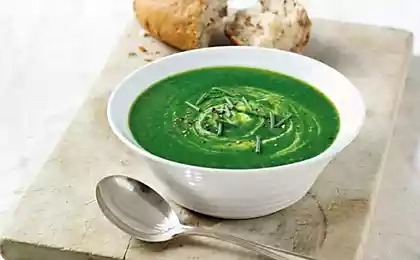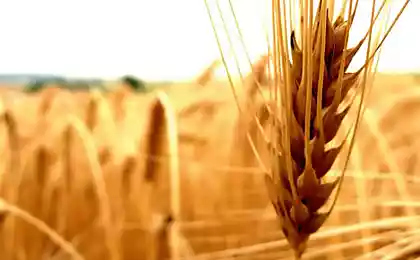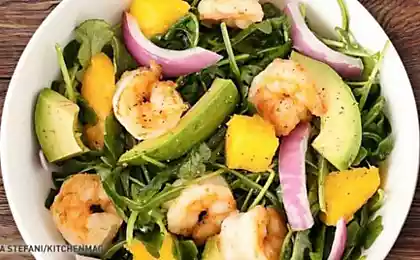525
Grow useful herbs—spinach

The spinach in our time is again gaining popularity, but about him, seemed to have forgotten. Although in 17-19 centuries, it is rather widely cultivated in Russia and in Europe, and the first mention of this sheet culture, you can find more 2000 thousand years ago.
This culture refers to leaf vegetables, and we should also mention its nutritional value. Spinach is an excellent source of iron, which, as you know, is not that other, as part of hemoglobin. And hemoglobin is responsible for supplying our body cells with oxygen, hemoglobin is responsible for metabolic processes and energy production. At first glance, the spinach can be confused with other leaf culture – sorrel, but upon closer inspection you can still notice the difference. Spinach leaves are more rounded and like lumpy, dark green, rounded shape – and the sorrel has leaves elongated and much brighter. And the taste of these two cultures to distinguish quite simple: sorrel leaves have a pronounced sour taste, and the spinach taste is quite spicy – the flavor is delicate with a subtle bitterness and a light, almost imperceptible acidity.
Spinach – beneficial properties. Unfortunately, the beneficial properties of spinach in our time, not everybody knows. So, spinach stimulates the pancreas and intestines, has a positive effect on the hematopoietic system – increases hemoglobin. In addition, it is perfectly digested and is rich in beneficial elements. Spinach contains vitamins A, C, E, K, lots of folic acid, calcium, iodine and iron. Also a lot of spinach and protein, more contains only beans and young peas.Vegetable plant, dioecious herbaceous, often annual, but there are biennial types. The altitude of the spinach grows up to 30-45 cm Leaves triangular-hastate, petiolate.
Staminate flowers green, collected in spicate-paniculate inflorescence, female flowers are in the axils of the leaves and collected into a rounder inflorescence resembling glomeruli. Flowering time June - August.How to grow spinach? Spinach is a precocious culture, and to get an earlier harvest is recommended podzimny sowing in the second half of October.
The beds under the spinach in advance of need to prepare, it is mandatory to add for sowing rotted manure or compost. For sowing of this crop does not need to allocate special beds, you can plant in early spring as the predecessor of the late vegetables, or even condense them aisle.
Early spring spinach can be sown in the conditions of greenhouses and polytunnels, but here the harvest will be great, if you take care of the fertilizer of the soil humus. Ideally, for sowing spinach mix mullein humus or compost to turf the land in equal proportions.
In greenhouses this culture can be seeded starting only from the end of February, while earlier sowing would need supplementary lighting, as the spinach culture is very light. The consumption of seeds per 1 m2 in terms of greenhouses and polytunnels is 20-30 grams of seeds. The distance between beds should be able to withstand 6-8 cm Optimum temperature for cultivation in the protected ground from 10°C to 18°C. Sowing in the open ground it is possible to produce, starting from the end of April, as soon as the ground warms up a bit in southern areas, you can sow earlier. To accelerate the germination of seeds and more amicable shoots, seeds recommended soaked for 1-2 days in warm water. Before sowing them a bit dried to them.
In the open ground seeds are sown in the prepared ridge, be sure to fertilized humus. The distance between the ridges 20-30 cm, seeding depth of no more than 2-3 cm, typically 1 m2 in the open ground requires not more than 5-6 grams of seeds.
As spinach culture precocious, it can sow throughout the garden season. It is best to sow small amounts every 1-2 weeks. Spinach, like all the early and maturing of culture is demanding of soil fertility. Therefore, care should be taken to soil fertilizer before seeding, and acid soils should be proizvestkovat. Spinach grows well in loamy soils rich in organic matter soils, sandy soils require frequent watering.
In the fall after harvest experienced gardener starts to prepare the land for spring sowing. For spinach, you need to dig up the plot, add compost or rotted manure, it is possible to make fertilizers. Fertilizer can take the complex and you can add 30 g of superphosphate, 15 g of potassium chloride per 1 m2. In the same period of time and liming if needed. After fertilizing and liming the soil once dug up and left so till spring.
In early spring, before planting to get good yields, you can make another and urea – 20 grams per 1 m2. You should not make immediately prior to planting fresh organic fertilizers, such as manure, otherwise it will hurt the taste of the finished product.
After the seeds sprout, you need to conduct a thinning of highly dense areas, ideally the distance between plants should be between 7 to 10 cm.
Spinach requires timely watering, as the drying of the soil leads to strelkovanie and flowering of asthenia, after which the leaves lose its flavor, become bitter and unfit for food. If you notice that the plants are weakened with water to produce nitrogen fertilizers.
Phosphate and potash fertilizing during growth to produce should not be, because they will contribute to the acceleration of flowering plants. Further care in this culture is reduced to regular watering, loosening of row spacing and weed removal. Spinach suitable for collecting as soon as Bush appeared 5-6 adult leaves, as a rule, this occurs after six to eight weeks after sowing. Wait until the leaves appear any more, the older the leaves, so they become more rigid and food is no longer suitable. You can remove the spinach from the bushes, and you can separately cut off the leaves, until the plant will not start strelkovtsy. Harvesting produce when the plants are dry after dew or rain.
Source: www.art-pen.ru























